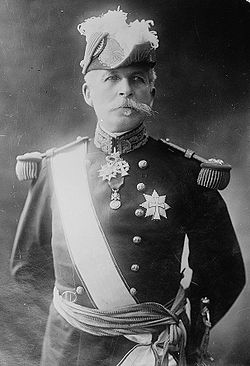Corps expéditionnaire d'Orient
| Corps Expeditionnaire d'Orient | |
|---|---|

Albert d'Amade, the CEO's first commander
|
|
| Active | 1915–1916 |
| Country |
|
| Role | Expeditionary force |
| Size | 1–2 divisions |
| Engagements | |
| Commanders | |
| Notable commanders |
Albert d'Amade Henri Gouraud Maurice Bailloud |
The Corps Expeditionnaire d'Orient (Oriental Expeditionary Force) (CEO) was a French Expeditionary Force raised for service during the Gallipoli Campaign in World War I. The corps initially consisted of a single infantry division that was raised in North Africa from metropolitan French and French colonial African soldiers, but later grew to two divisions. It took part in fighting around Kum Kale, on the Asiatic side of the Dardanelles, at the start of the campaign before being moved to Cape Helles where it fought alongside British formations for the remainder of the campaign. In October 1915, the corps was reduced to one division again and was finally evacuated from the Gallipoli Peninsula in January 1916 when it ceased to exist.
Initially, the force consisted of 16,700 troops organised into one division, made up of two brigades, which had been raised from the 17th Colonial Division in North Africa and included both "metropolitan" French and colonial African troops. The so-called metropolitan units included four battalions of zouaves mainly recruited from French settlers in Algeria and Tunisia, the 175th regiment of French line infantry and one battalion of the Foreign Legion. The colonial troops consisted of battalions of both West African Tirailleurs Senegalais and white regulars of colonial infantry, initially organised into the 6th regiment de march colonial d'infanterie. The force had a strong divisional artillery, consisting of six field and two mountain batteries, but having been raised quickly, it received only limited training as a formation, and with only two brigades it was smaller than the British divisions that took part in the campaign. Later in the campaign, the corps was expanded to include a second division, raised from the 156th Infantry Division. At its height, the corps' strength was around 42,000 men.
...
Wikipedia
